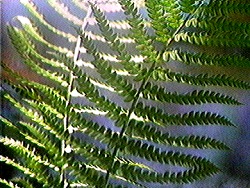Frank Gillette
Biography
Merging a rich visual sensibility with an almost scientific engagement with taxonomy and ecological systems, Frank Gillette is a video pioneer whose multi-channel installations and tapes focus on empirical observations of natural phenomena. An early theorist of video's formal and aesthetic parameters, in 1969 he was a founding member and president of the influential video collective Raindance. With influences ranging from cybernetics to painting, Gillette was an innovator of the multi-channel installation form, experimenting with image feedback, time-delay and closed-circuit systems. His seminal installation Wipe Cycle (1969), produced in collaboration with Ira Schneider, was included in the landmark 1969 exhibition TV As A Creative Medium at the Howard Wise Gallery in New York.
Gillette's later multi-channel works draw parallels between technological, ecological, and cognitive processes. His meticulous, close-up visual records of ecological systems and natural landscapes are structured on rigorous observational systems and strategies of visual associations. "Work in the medium of the realist," he states. His striking studies of ecological microcosms employ a magnified realism, a kind of scientific naturalism, to pose metaphors for universality and specificity, observation and perception, through a reconstitution of the natural order.
In addition to his work in video, Gillette actively works in painting, drawing, and photography, and is the author of several publications.
Gillette was born in 1941. He studied painting at the Pratt Institute in New York. Gillette is the recipient of numerous awards, including fellowships from the Rockefeller Foundation and the Guggenheim Foundation, and grants from the New York State Council on the Arts and the National Endowment for the Arts. He was artist-in-residence at the American Academy in Rome in 1984-85. Gillette is the author of numerous published works, including Between Paradigms (1973) and Of Another Nature (1988). His videotapes have been seen in solo exhibitions at the Everson Museum of Art, Syracuse; Contemporary Arts Museum, Houston; The Corcoran Gallery of Art, Washington D.C.; Castello di Rivoli, Turin, Italy; Leo Castelli Gallery, New York; Long Beach Museum of Art, California; The Institute of Contemporary Art, Boston; and the Whitney Museum of American Art, New York. In addition, Gillette's work has been seen in numerous group shows, at festivals and institutions including Kunsthalle, Cologne; Documenta 6, Kassel, Germany; Venice Biennale; The Museum of Modern Art, New York; Carnegie Museum, Pittsburgh; San Francisco Museum of Modern Art; and Neuer Berliner Kunstverein, Berlin. He lives in New York.
